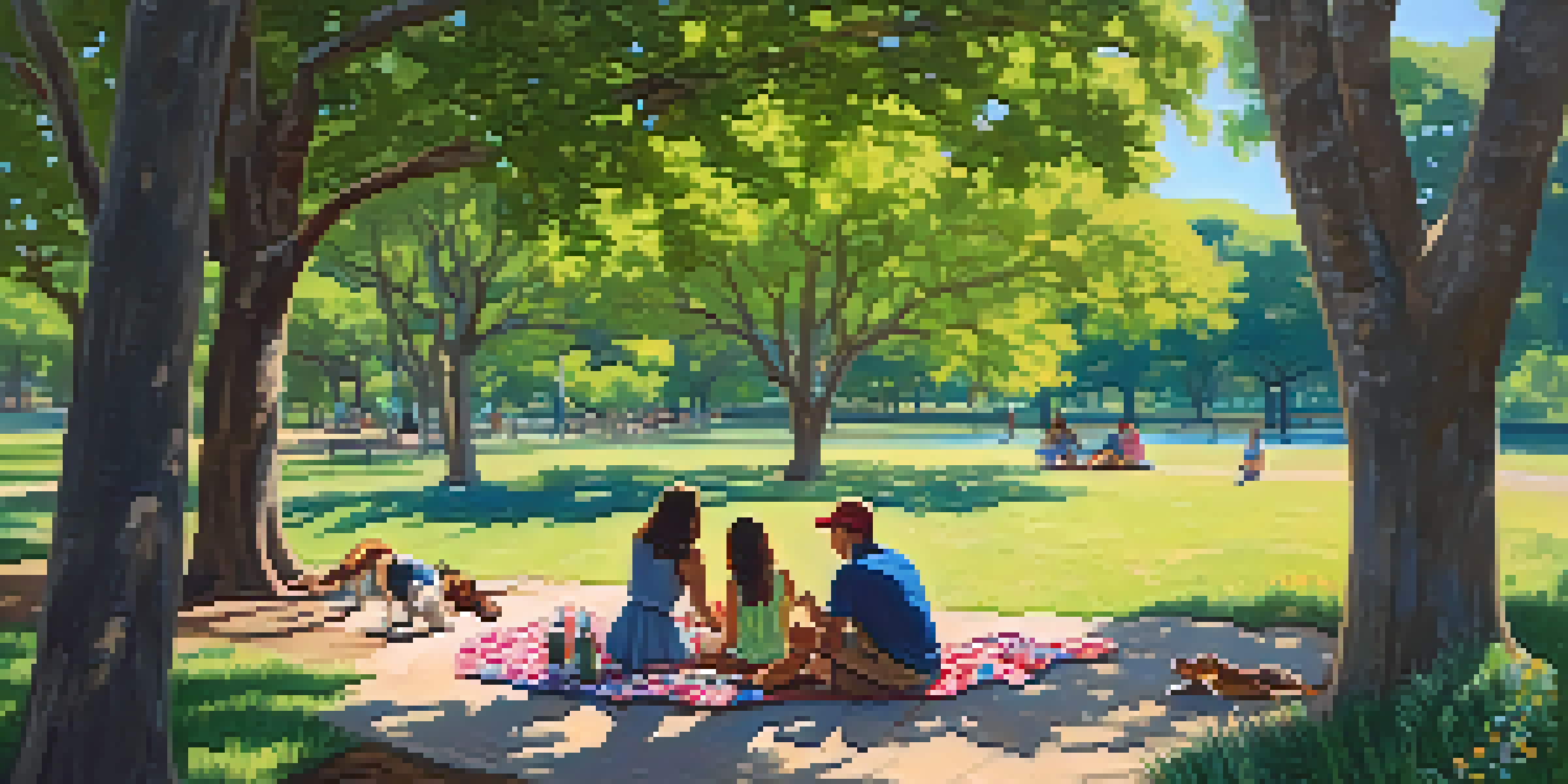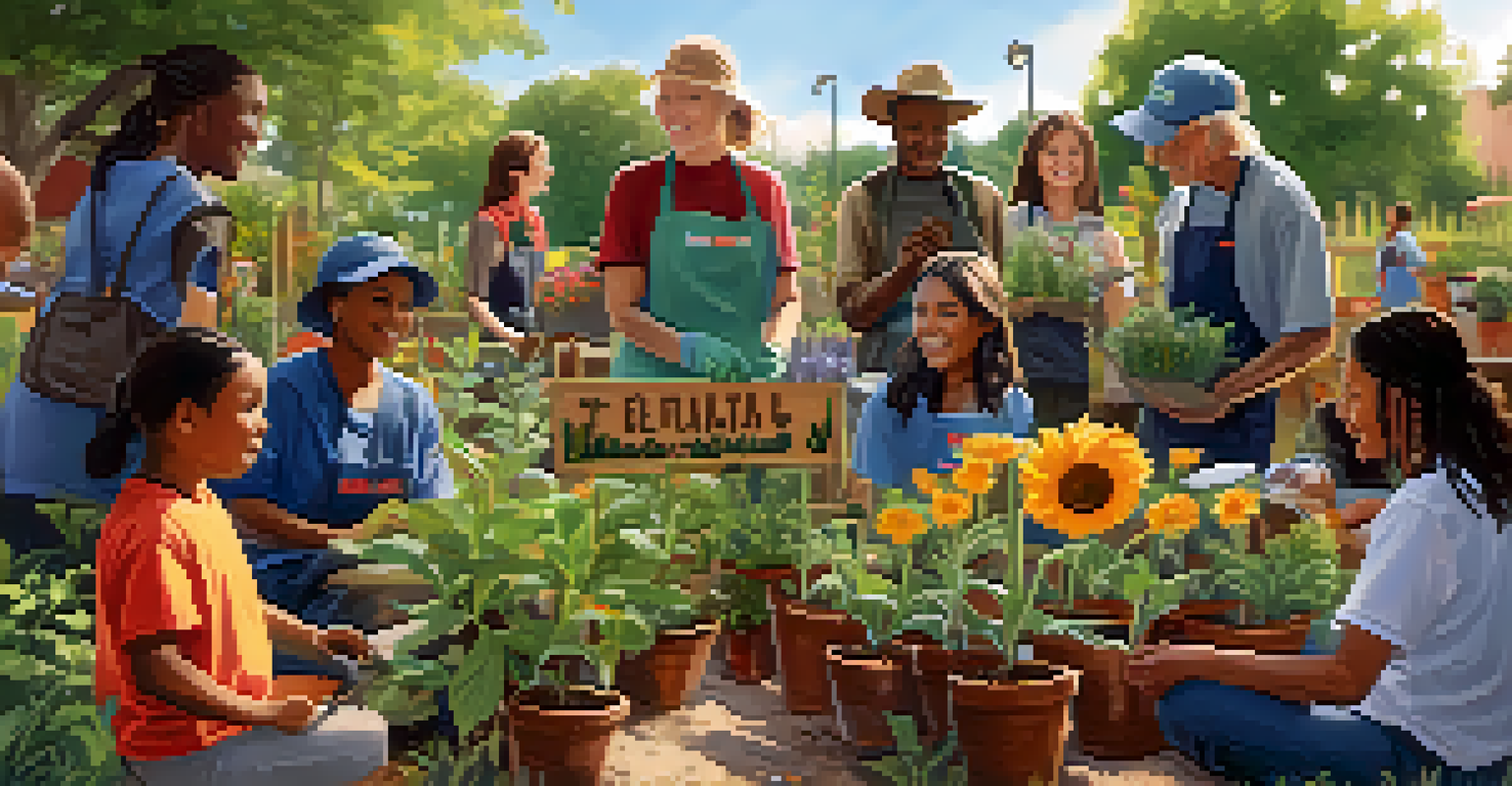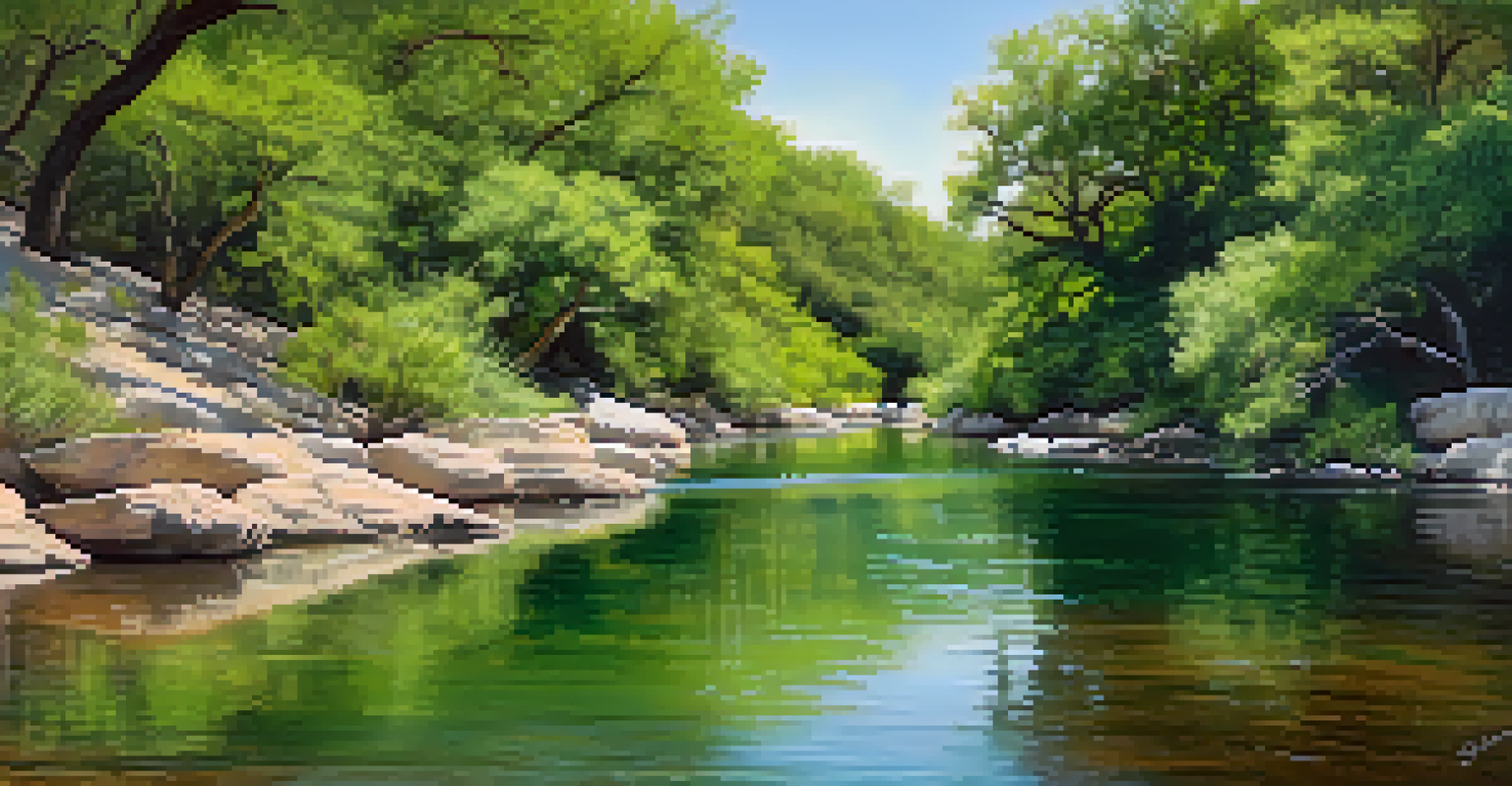Austin's Role in Enhancing Local Biodiversity Through Conservation

Understanding Biodiversity and Its Importance in Austin
Biodiversity refers to the variety of life in a particular habitat or ecosystem. In Austin, this diversity is crucial not just for the environment, but also for the community's health and economy. A rich array of species can contribute to ecosystem resilience, helping to maintain natural processes like pollination, nutrient cycling, and climate regulation.
Biodiversity is the foundation of ecosystem services that we rely on for our well-being.
Austin's unique geography, with its hills, rivers, and green spaces, supports a wide range of flora and fauna. This diversity can be seen in local parks, such as Zilker Park and the Barton Creek Greenbelt, where residents and visitors alike enjoy the beauty of nature. Protecting these areas ensures that Austin’s natural heritage remains intact for future generations.
Moreover, the presence of diverse species can enhance recreational opportunities and attract tourism. Birdwatchers, hikers, and nature enthusiasts frequently flock to Austin's natural areas, highlighting the interconnectedness of biodiversity with the local economy and community well-being.
Current Conservation Efforts in Austin: A Community Approach
Austin has implemented several conservation initiatives aimed at preserving and enhancing local biodiversity. One prominent example is the City of Austin's Biodiversity Plan, which outlines strategies to protect and restore habitats while promoting community involvement. This collaborative approach encourages residents to participate in conservation efforts, fostering a sense of stewardship over local natural resources.

Various organizations, like the Austin Parks Foundation and the Travis Audubon Society, also play a pivotal role in these efforts. They organize volunteer events, such as tree planting and habitat restoration projects, which not only improve local environments but also engage residents in meaningful ways. These initiatives create a strong sense of community and shared responsibility for protecting Austin's natural treasures.
Biodiversity's Role in Austin's Health
The variety of life in Austin enhances ecosystem resilience and supports the community's overall well-being and economy.
Engagement goes beyond just volunteer work; educational programs in schools and community centers raise awareness about the importance of biodiversity. Such initiatives empower residents, especially youth, to advocate for environmental stewardship and make informed choices that positively impact their surroundings.
The Role of Urban Green Spaces in Biodiversity
Urban green spaces, such as parks and community gardens, play a vital role in supporting biodiversity in Austin. These areas provide essential habitats for various species, from birds and butterflies to native plants. By creating and maintaining green spaces, the city helps sustain ecosystems that might otherwise struggle in an urban setting.
We won't have a society if we destroy the environment.
Additionally, these spaces offer residents a chance to connect with nature, promoting mental and physical well-being. Studies have shown that spending time in nature can reduce stress and improve overall health. As Austin continues to grow, prioritizing the creation and preservation of green spaces becomes increasingly important for both biodiversity and community health.
Local initiatives, like the Grow Green program, aim to educate residents on how to create wildlife-friendly gardens, further enhancing urban biodiversity. Simple actions like planting native species or installing bird feeders can make a significant difference in supporting local wildlife and fostering a more vibrant ecosystem.
Preserving Native Species: A Key Focus for Austin
Native species are integral to maintaining the ecological balance in Austin’s environment. They have adapted to the local climate and soil conditions, making them more resilient and important for local ecosystems. Protecting these species helps ensure that the intricate web of life in Austin remains strong and diverse.
Efforts to preserve native species often involve habitat restoration and the removal of invasive species that threaten local flora and fauna. Organizations like the Lady Bird Johnson Wildflower Center play a crucial role in promoting the use of native plants in landscaping, which not only supports local wildlife but also enhances the beauty of Austin’s neighborhoods.
Community Drives Conservation Efforts
Local residents actively participate in conservation initiatives, fostering a sense of stewardship and responsibility for Austin's natural resources.
Community involvement is essential in these preservation efforts. By participating in local programs and initiatives, residents can contribute to the protection of native species, making a lasting impact on their local environment. This collective action fosters a deeper connection between the community and the natural world.
The Impact of Climate Change on Austin's Biodiversity
Climate change poses significant challenges to biodiversity in Austin, affecting species distribution and habitat viability. Rising temperatures and altered precipitation patterns can disrupt the delicate balance of local ecosystems. Understanding these impacts is crucial for developing effective conservation strategies that can adapt to changing environmental conditions.
Austin's conservation efforts increasingly incorporate climate resilience into their planning. Initiatives focus on enhancing habitats that can withstand climate fluctuations and support diverse species. This proactive approach not only helps protect current biodiversity but also prepares the city for the uncertainties of the future.
Public awareness campaigns inform residents about the impacts of climate change on local wildlife, encouraging community engagement in climate action. By understanding the risks and taking collective steps, Austin’s residents can help mitigate these effects and promote a more sustainable future for their city.
Community Involvement: The Heart of Conservation in Austin
Community involvement is vital to the success of conservation efforts in Austin. Local residents often lead initiatives, organizing clean-up events and educational workshops to raise awareness about biodiversity. This grassroots approach fosters a sense of ownership and responsibility, empowering individuals to make a difference in their environment.
Organizations like Keep Austin Beautiful provide resources and support for community-led projects, making it easier for residents to engage in conservation. These collaborations not only enhance local biodiversity but also build strong community ties, creating a network of environmentally conscious citizens who advocate for sustainable practices.
Climate Change Threatens Local Ecosystems
Austin's biodiversity faces significant risks from climate change, necessitating adaptive conservation strategies to protect local wildlife.
Social media and local events further amplify community voices, showcasing successful conservation stories and inspiring others to get involved. When residents unite for a common cause, the impact can be profound, leading to lasting changes that benefit both people and nature in Austin.
Looking Ahead: The Future of Biodiversity Conservation in Austin
As Austin continues to grow, the future of biodiversity conservation will rely heavily on innovative strategies and community involvement. Emphasizing sustainable development practices can help ensure that urban expansion does not come at the cost of local ecosystems. By integrating biodiversity considerations into city planning, Austin can create a model for other urban areas to follow.
Investments in conservation technology, such as wildlife monitoring and habitat mapping, can enhance the city’s ability to protect its natural resources. These tools provide valuable data that can inform decision-making and prioritize conservation efforts to where they are most needed. The goal is to create a resilient ecosystem that can thrive amid urban pressures.

Ultimately, fostering a culture of conservation in Austin will require ongoing education and engagement. By inspiring future generations to appreciate and protect biodiversity, the city can ensure that its natural beauty and ecological richness endure for years to come.